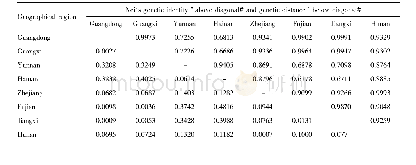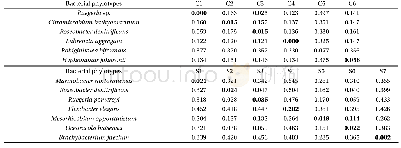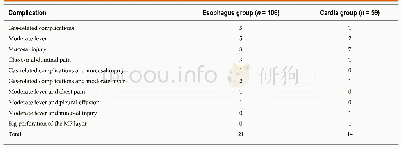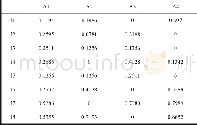《Table 2.Mahalanobis distances between groups from wing venation CVs, shown separately for each sex.
 提示:宽带有限、当前游客访问压缩模式
提示:宽带有限、当前游客访问压缩模式
本系列图表出处文件名:随高清版一同展现
《Geometric morphometric and molecular evidence suggest a new fruit fly species in Bactrocera(Zeugodacus) tau complex(Diptera: Tephritidae)》
*Above diagonal—wings of male;below diagonal—wings of female.
Two greatest CVs contribute up to 97%of males’wing geometric variation,66%and 31%by CV1 and CV2,respectively(Fig.3A).Three clusters are depicted by CV1 and CV2;each of B.tau sensu stricto and Gr.II have formed a remote cluster,as also presented by Mahalanobis distances in Table 2.B.tau form C and Gr.I comprise the third cluster,where Mahalanobis distance between them is relatively low.In females’wing shapes,78%and 17%of variation is represented by CV1 and CV2,respectively(Fig.3B).Females’CVs similarly divide the data to three clusters;Mahalanobis distances between B.tau sensu stricto and the rest are around 3.8 to 5.0(Table 2),and similar results were reported from Gr.II.On the other hand,Mahalanobis distance between B.tau form C and Gr.I yields a value of around 2.2.Though the resolution is less clear than in males,they give similar wing discrimination.
| 图表编号 | XD0016207400 严禁用于非法目的 |
|---|---|
| 绘制时间 | 2018.01.01 |
| 作者 | Jingyoh Zaelor、Sangvorn Kitthawee |
| 绘制单位 | Department of Biology, Faculty of Science, Mahidol University、Department of Biology, Faculty of Science, Mahidol University |
| 更多格式 | 高清、无水印(增值服务) |
查看“Table 2.Mahalanobis distances between groups from wing venation CVs, shown separately for each sex.All comparisons were”的人还看了
-

- Table 4 Nei's genetic identity and genetic distance of‘Candidatus Liberibacter asiaticus’from eight provinces in southe
-

- Table 2.Genetic distances among bacterial phylotypes isolated from Chattonella marina and Skeletonema costatum and their





